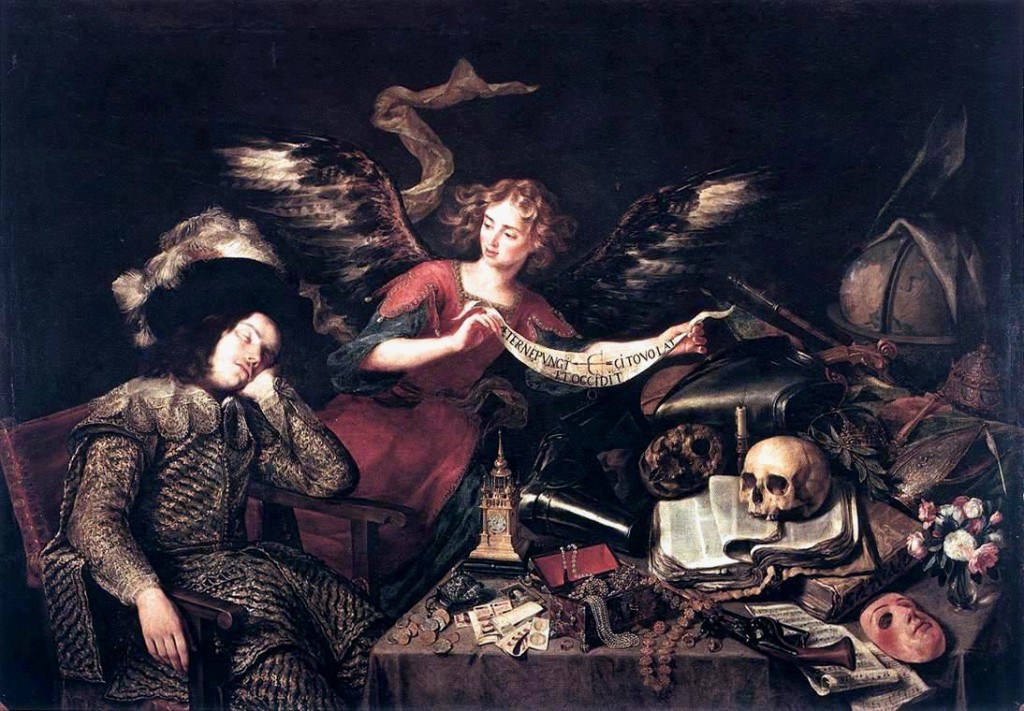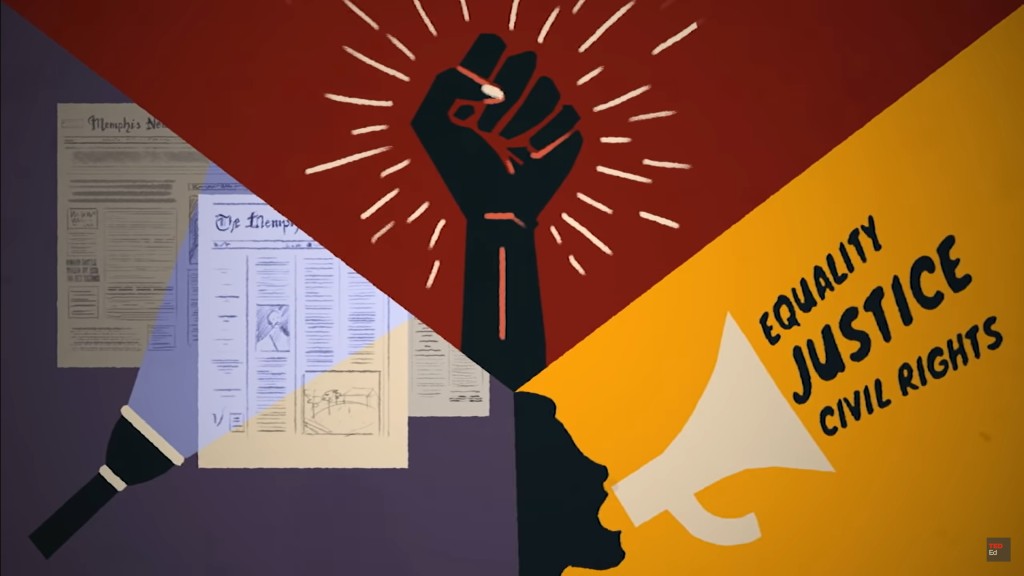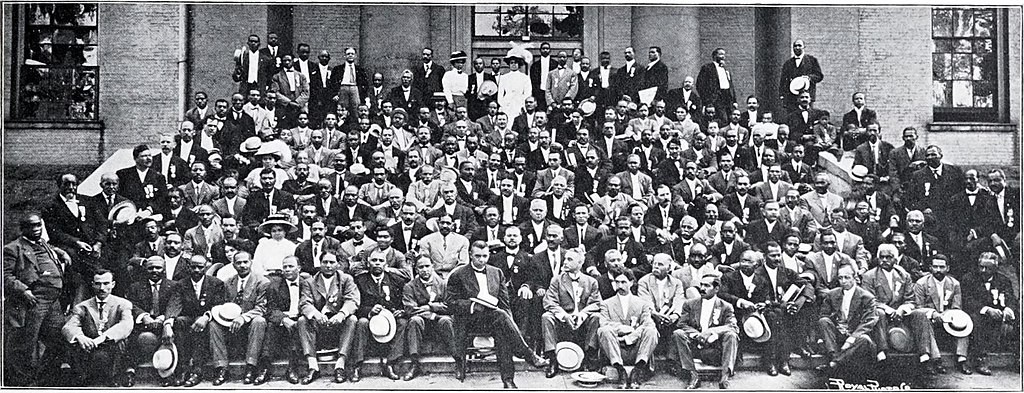Archive
Video | Frederick D. Patterson – The First African American to Own and Operate a Car Manufacturing Company [1m 59s]

Frederick The Creator
Frederick Douglas Patterson (1871 – 1932) was an American entrepreneur, known for running the family business, C.R. Patterson and Sons, and he is the creator of the Patterson-Greenfield automobile of 1915.
~ Frederick Patterson, Wikipedia
Related:
The Greatest Puzzle of Them All

If you want to awaken all of humanity, then awaken all of yourself, if you want to eliminate the suffering in the world, then eliminate all that is negative in yourself. Truly, the greatest gift you have to give is that of your own self-transformation.”
~ Laozi (azquotes.com)
Quotes: “’Someday’ is a disease that will take your dreams to the grave with you.” ~ Timothy Ferriss

“’Someday’ is a disease that will take your dreams to the grave with you.”
~ Timothy Ferriss (clockify.me)
“Read Absolutely Everything,” by Any Means Necessary

“Read absolutely everything you get your hands on because you’ll never know where you’ll get an idea from.”
~ Malcolm X (azquotes.com)
Two Autobiographical Works by an Enslaved African-American
Thanks to staff and volunteers at Project Gutenberg, two autobiographical works by William Wells Brown have been preserved for reading on- and offline…
Title One: Narrative of William W. Brown, a Fugitive Slave
“A woman was also kept at the quarters to do the cooking for the field hands, who were summoned to their unrequited toil every morning at four o’clock, by the ringing of a bell, hung on a post near the house of the overseer. They were allowed half an hour to eat their breakfast, and get to the field. At half past four, a horn was blown by the overseer, which was the signal to commence work; and every one that was not on the spot at the time, had to receive ten lashes from the negro-whip, with which the overseer always went armed. The handle was about three feet long, with the butt-end filled with lead, and the lash six or seven feet in length, made of cowhide, with platted wire on the end of it. This whip was put in requisition very frequently and freely, and a small offence on the part of a slave furnished an occasion for its use.
“During the time that Mr. Cook was overseer, I was a house servant—a situation preferable to that of a field hand, as I was better fed, better clothed, and not obliged to rise at the ringing of the bell, but about half an hour after. I have often laid and heard the crack of the whip, and the screams of the slave.
“My mother was a field hand, and one morning was ten or fifteen minutes behind the others in getting into the field. As soon as she reached the spot where they were at work, the overseer commenced whipping her. She cried, “Oh! pray—Oh! pray—Oh! pray”—these are generally the words of slaves, when imploring mercy at the hands of their oppressors. I heard her voice, and knew it, and jumped out of my bunk, and went to the door. Though the field was some distance from the house, I could hear every crack of the whip, and every groan and cry of my poor mother. I remained at the door, not daring to venture any farther. The cold chills ran over me, and I wept aloud. After giving her ten lashes, the sound of the whip ceased, and I returned to my bed, and found no consolation but in my tears. It was not yet daylight.”
~ “Narrative of William W. Brown, a Fugitive Slave” by William Wells Brown
Title Two:: Three Years in Europe: Places I Have Seen and People I Have Met
“William Wells Brown was born at Lexington, in the state of Kentucky, as nearly as he can tell in the autumn of 1814. In the Southern States of America, the pedigree and age of a horse or a dog are carefully preserved, but no record is kept of the birth of a slave. All that Mr. Brown knows upon the subject is traditionally, that he was born “about corn-cutting time” of that year. His mother was a slave named Elizabeth, the property of Dr. Young, a physician. His father was George Higgins, a relative of his master.”
~ “Three Years in Europe: Places I Have Seen and People I Have Met” by William Wells Brown
Related:
- William Wells Brown | Wikipedia
Quote of the Week: “…we can start now, start slowly changing the world…” ~ Anne Frank

“How lovely to think that no one need wait a moment, we can start now, start slowly changing the world! How lovely that everyone, great and small, can make their contribution toward introducing justice straightaway… And you can always, always give something, even if it is only kindness!”
~ Anne Frank (azquotes.com)
Related:
- Who was Anne Frank? | annefrank.org
Video | How Ida B. Wells Risked Her Life to Hold Murderers Accountable [4m 49s]

“In the late 1800’s, lynchings were happening all over the American South, often without any investigation or consequences for the murderers. A young journalist set out to expose the truth about these killings. Her reports shocked the nation, launched her journalism career and a lifelong pursuit of civil rights. Christina Greer details the life of Ida B. Wells and her tireless struggle for justice.”
~ TED-Ed | How one journalist risked her life to hold murderers accountable – Christina Greer (YouTube)
Madam C.J. Walker, Entrepreneur, Philanthropist, Political and Social Activist (1867)

“I am a woman who came from the cotton fields of the South. From there I was promoted to the washtub. From there I was promoted to the cook kitchen. And from there I promoted myself into the business of manufacturing hair goods and preparations….I have built my own factory on my own ground.”¹
Sarah Breedlove Is Born
On December 23, 1867, Sarah Breedlove was born on a plantation in Delta, Louisiana. Sarah’s parents, Owen and Minerva Anderson Breedlove, were emancipated slaves-turned-sharecroppers after the United States Civil War. The Breedloves had six children; Sarah became the world famous entrepreneur, philanthropist, and activist Madam C.J. Walker…

“Walker made her fortune by developing and marketing a line of cosmetics and hair care products for black women through the business she founded, Madam C. J. Walker Manufacturing Company.”²
In addition to becoming the first documented and confirmed, self-made millionairess listed in the Guinness Book of World Records, Madam C.J. Walker:
- was an activist for the advancement of black Americans
- donated $5,000 to support the National Association for the Advancement of Colored People (NAACP)
- was an anti-lynching activist
- paid tuition for six African American students to attend Tuskegee Institute
- made contributions to the Colored Young Men’s Christian Association (YMCA)
- owned Villa Lewaro, a mansion located in an affluent neighborhood in Irvington, Long Island, New York
- owned real estate properties in Harlem, New York; Chicago, Illinois; Pittsburgh, Pennsylvania; and St. Louis, Missouri
In her last will, Madam Walker bequeathed two-thirds of future net profits to charity.
Related:
- Madam C.J. Walker | Official Site
- First self-made millionairess | Guinness World Records
- Madam C.J. Walker: The Ultimate Self-Made Woman | Medium
- The Collectivist Roots of Madam C.J. Walker’s Philanthropy | Black Perspectives (aaihs.org)
- Madam C.J. Walker | National Women’s History Museum
Footnotes:
- madamcjwalker.com, “Madam C.J. Walker,” https://madamcjwalker.com/
- Wikipedia, “Madam C.J. Walker,” https://en.wikipedia.org/wiki/Madam_C._J._Walker
Sources:
- madamcjwalker.com, “About Madam C.J. Walker,” https://madamcjwalker.com/about/
- Chicago – Michals, Debra. “Madam C. J. Walker.” National Women’s History Museum. https://www.womenshistory.org/education-resources/biographies/madam-cj-walker.
- Tyrone McKinley Freeman, “The Collectivist Roots of Madam C. J. Walker’s Philanthropy,” https://www.aaihs.org/the-collectivist-roots-of-madam-c-j-walkers-philanthropy/
- Wikipedia, “Madam C.J. Walker,” https://en.wikipedia.org/wiki/Madam_C._J._Walker
Booker T. Washington, Founder, Educator, Adviser… (1856)

Somewhere in Hale’s Ford, Virginia, on April 5, 1856, in a “slave hut…”
Booker T. Washington – the future African-American educator, founder, and adviser to two Presidents of the United States – was born.
The sting of poverty made going to school challenging for Booker, who, at the age of nine, began working at a salt furnace where brine was turned into commercial-grade salt.
‘Booker seized any opportunity to learn to read and write and began what he called his “book knowledge” right in that salt-furnace. Since each salt-packer had to mark his barrels with a certain number, Booker learned to recognize the number put on his barrels: “18.”’
‘He did not yet know other figures, but he had cleverly found a method for beginning to decipher them. It was a compulsion. “I had an intense longing to learn to read,” he wrote. “I determined, when quite a small child, that if I accomplished nothing else in life, I would in some way get enough education to enable me to read common books and newspapers.”’¹
His zest for personal and community advancement led Booker T. Washington to these accomplishments:

- Beginning in 1881, as its first president, until his death in 1915, he helped develop the Tuskegee Normal and Industrial Institute from ‘”an institution with two small converted buildings, no equipment, and very little money,” to “100 well-equipped buildings, some 1,500 students, a faculty of nearly 200 teaching 38 trades and professions, and an endowment of approximately $2 million.”‘²
Over the years, Tuskegee Normal and Industrial cycled through name changes and is now Tuskegee University.
- On August 23, 1900, he founded the National Negro Business League (NNBL) in Boston, Massachusetts, the nation’s first and oldest business organization. The NNBL existed 12 years before the U.S. Chamber of Commerce, Inc., and was formally incorporated in 1901 in New York City.
While the organization is still in existence, it is now called the National Business League (NBL.)
- From 1901 to 1913, Booker T. advised U.S. Presidents Theodore Roosevelt and William Howard Taft.³
Related:
- Video || The George Washington Carver Story | The Henry Ford’s Innovation Nation [3m 31s]
- “An Autobiography, The Story of My Life and Work,” by Booker T. Washington
- Booker T. Washington (National Park Service)
- Booker T. Washington Delivers the 1895 Atlanta Compromise Speech
- National Negro Business League | Making Black America
- National Business League
- Tuskegee University
- The Past Is Never Past: Slave Labor in the West Virginia Salt Works
- “False Black Power” by Jason L. Riley
References:
- Booker T. Washington, Encyclopaedia Britannica
- Booker T. Washington, Theodore Roosevelt Center at Dickinson State University
- Booker T. Washington, Wikipedia
- National Negro Business League, Wikipedia
- The Past Is Never Past: Slave Labor in the West Virginia Salt Works, The Atlantic
- Tuskegee University
Footnotes:
- Bill of Rights Institute, “To Accomplish the Most Good: Booker T. Washington’s Education – Handout A: Narrative,”
- Editors of Encyclopaedia Britannica, “Booker T. Washington,”
- study.com, “Which president did Booker T. Washington advise?”
Video || The George Washington Carver Story | The Henry Ford’s Innovation Nation [3m 31s]
The George Washington Carver Story
In this segment of The Henry Ford’s Innovation Nation, Mo Rocca meets with Debra A. Reid, Curator of Agriculture and the Environment at The Henry Ford, to explore agriculture [and] the work [of] scientist George Washington Carver.
The George Washington Carver Story | The Henry Ford’s Innovation Nation (YouTube)
Mo and Deb met in the George Washington Carver cabin in Greenfield Village. Henry Ford built the cabin in 1942 to honor his friend, agricultural scientist George Washington Carver. The cabin was based on Carver’s recollections of the slave cabin in Missouri in which he was born in 1864.
In 1942, Henry Ford showed his admiration for his friend and colleague George Washington Carver by naming a Ford Motor Company nutrition laboratory after him. This was appropriate: Carver had dedicated his career to experimental agriculture and to improving farmer nutrition and health as well as crop yields. Though frail, Carver traveled to Dearborn for the dedication. Edsel Ford was also present.
Carver spent his career at the Tuskegee Institute in Alabama, advocating for new crops, such as peanuts, that would enrich both Southern farmers and Southern soils
Related:
- The Henry Ford’s Innovation Nation
Video | 10 African American Women Inventors (Black Excellist) [18m 56s]
10 African American Women Inventors
- Patricia Bath
- Marie Van Brittan Brown
- Miriam Benjamin
- Sarah Goode
- Marjorie Stewart Joyner
- Judy Reed
- Sarah Boone
- Ellen Eglin
- Lyda Newman
- Alice H. Parker